Modeling and Validation of Vertical Direction Force Estimation with a Three-Dimensional Force Measurement Instrument Based on a Zero-Compliance Mechanism
Abstract
1. Introduction
2. Materials and Methods
2.1. Principle of Zero-Compliance
2.2. Force Measurement Using a Double Series Magnetic Suspension System
3. Results
4. Development of the System
4.1. Development of the Structure for the Vertical Direction Force Measurement in the mN Range
4.2. Setup for Microforce Measurement
5. Experimental Results
6. Conclusions
Author Contributions
Funding
Conflicts of Interest
References
- Stefanescu, D.M. Handbook of Force Transducers: Principles and Components; Springer Science & Business Media: Berlin/Heidelberg, Germany, 2011. [Google Scholar]
- Song, A.; Wu, J.; Qin, G.; Huang, W. A novel self-decoupled four degree-of-freedom wrist force/torque sensor. Measurement 2007, 40, 883–891. [Google Scholar] [CrossRef]
- Park, J.-J.; Kim, G.-S. Development of the 6-axis force/moment sensor for an intelligent robot’s gripper. Sens. Actuators A 2005, 118, 127–134. [Google Scholar] [CrossRef]
- Choi, W.-C. Polymer micromachined flexible tactile sensor for three-axial loads detection. Trans. Electr. Electron. Mater. 2010, 11, 130–133. [Google Scholar] [CrossRef]
- Haddab, Y.; Chen, Q.; Lutz, P. Improvement of strain gauges micro-forces measurement using Kalman optimal filtering. Mechatronics 2009, 19, 457–462. [Google Scholar] [CrossRef]
- Peirs, J.; Clijnen, J.; Reynaerts, D.; Van Brussel, H.; Herijgers, P.; Corteville, B.; Boone, S. A micro optical force sensor for force feedback during minimally invasive robotic surgery. Sens. Actuators A 2004, 115, 447–455. [Google Scholar] [CrossRef]
- Dao, D.V.; Toriyama, T.; Wells, J.; Sugiyama, S. Silicon piezoresistive six-degree of freedom micro force-moment sensor. Sens. Mater 2002, 15, 113–135. [Google Scholar]
- Haddab, Y.; Chaillet, N.; Bourjault, A. A microgripper using smart piezoelectric actuators. In Proceedings of the 2000 IEEE/RSJ International Conference on Intelligent Robots and Systems (IROS 2000) (Cat. No.00CH37113), Takamatsu, Japan, 31 October–5 November 2000. [Google Scholar]
- Fung, C.K.M.; Elhajj, I.; Li, W.J.; Xi, N. A 2-D PVDF force sensing system for micro-manipulation and micro-assembly. In Proceedings of the 2002 IEEE International Conference on Robotics and Automation (Cat. No.02CH37292), Washington, DC, USA, 11–15 May 2002. [Google Scholar]
- Mei, T.; Li, W.J.; Ge, Y.; Chen, Y.; Ni, L.; Chan, M.H. An integrated MEMS three-dimensional tactile sensor with large force range. Sens. Actuators A 2000, 80, 155–162. [Google Scholar] [CrossRef]
- Ohka, M.; Mitsuya, Y.; Higashioka, I.; Kabeshita, H. An experimental optical three-axis tactile sensor for micro-robots. Robotica 2005, 23, 457–465. [Google Scholar] [CrossRef]
- Jalili, N.; Laxminarayana, K. A review of atomic force microscopy imaging systems: Application to molecular metrology and biological sciences. Mechatronics 2004, 14, 907–945. [Google Scholar] [CrossRef]
- Vahabi, S.; Salman, B.N.; Javanmard, A. Atomic force microscopy application in biological research: A review study. Iran. J. Med. Sci. 2013, 38, 76. [Google Scholar] [PubMed]
- Ştefănescu, D.M.; Anghel, M.A. Electrical methods for force measurement–A brief survey. Measurement 2013, 46, 949–959. [Google Scholar] [CrossRef]
- Wei, Y.; Xu, Q. An overview of micro-force sensing techniques. Sens. Actuators A 2015, 234, 359–374. [Google Scholar] [CrossRef]
- Boyden, R.P.; Britcher, C.P.; Tcheng, P. Status of wind tunnel magnetic suspension research. SAE Trans. 1985, 94, 769–777. [Google Scholar]
- Sawada, H.; Suenaga, H.; Suzuki, T.; Ikeda, N. Status of MSBS Study at NAL. Available online: https://ntrs.nasa.gov/search.jsp?R=19940031347 (accessed on 15 February 2019).
- Mizuno, T.; Sekine, D.; Ishino, Y.; Takasaki, M. In Proposal of force measurement using series magnetic suspension. In Proceedings of the ASME 2012 5th Annual Dynamic Systems and Control Conference joint with the JSME 2012 11th Motion and Vibration Conference, Fort Lauderdale, FL, USA, 17–19 October 2012. [Google Scholar]
- Mizuno, T.; Sekine, D.; Ishino, Y.; Takasaki, M. G100072 Noncontact Microforce Measurement Using Series Magnetic Suspension: 1st report: Measurement Principle. J-STAGE 2011. [Google Scholar] [CrossRef]
- Ishii, K.; Mizuno, T.; Takasaki, M.; Yishino, Y. Noncontact Microforce Measurement Using Series Magnetic Suspension 3rd report: Development of Tri-axial Force Transducer. In Proceedings of the 24th Symposium on Electromagnetics and Dynamics (SEAD24), Toyama, Japan, 16–18 May 2012. [Google Scholar]
- Mizuno, T.; Hayashi, Y.; Ishino, Y.; Takasaki, M. Proposal of Force Measurement Using A Zero-Compliance Mechanism. In Proceedings of the XXI IMEKO World Congress, Prague, Czech Republic, 30 August–4 September 2015. [Google Scholar]
- Nahiyan, M.H.A.; Mizuno, T.; Takasaki, M.; Ishino, Y.; Hara, M.; Yamaguchi, D. Development of Three-Dimensional Force Measurement Instrument Using Zero-Compliance Mechanism. J. Jpn. Soc. Appl. Electromagnet. Mech. 2018, 26, 172–177. [Google Scholar] [CrossRef]
- Nahiyan, M.H.A.; Mizuno, T.; Takasaki, M.; Ishino, Y.; Hara, M.; Yamaguchi, D. Validation of multi-dimensional force measurement using zero-compliance mechanism. J. Adv. Mech. Des. Syst. Manuf. 2018, 12, JAMDSM0038. [Google Scholar] [CrossRef]
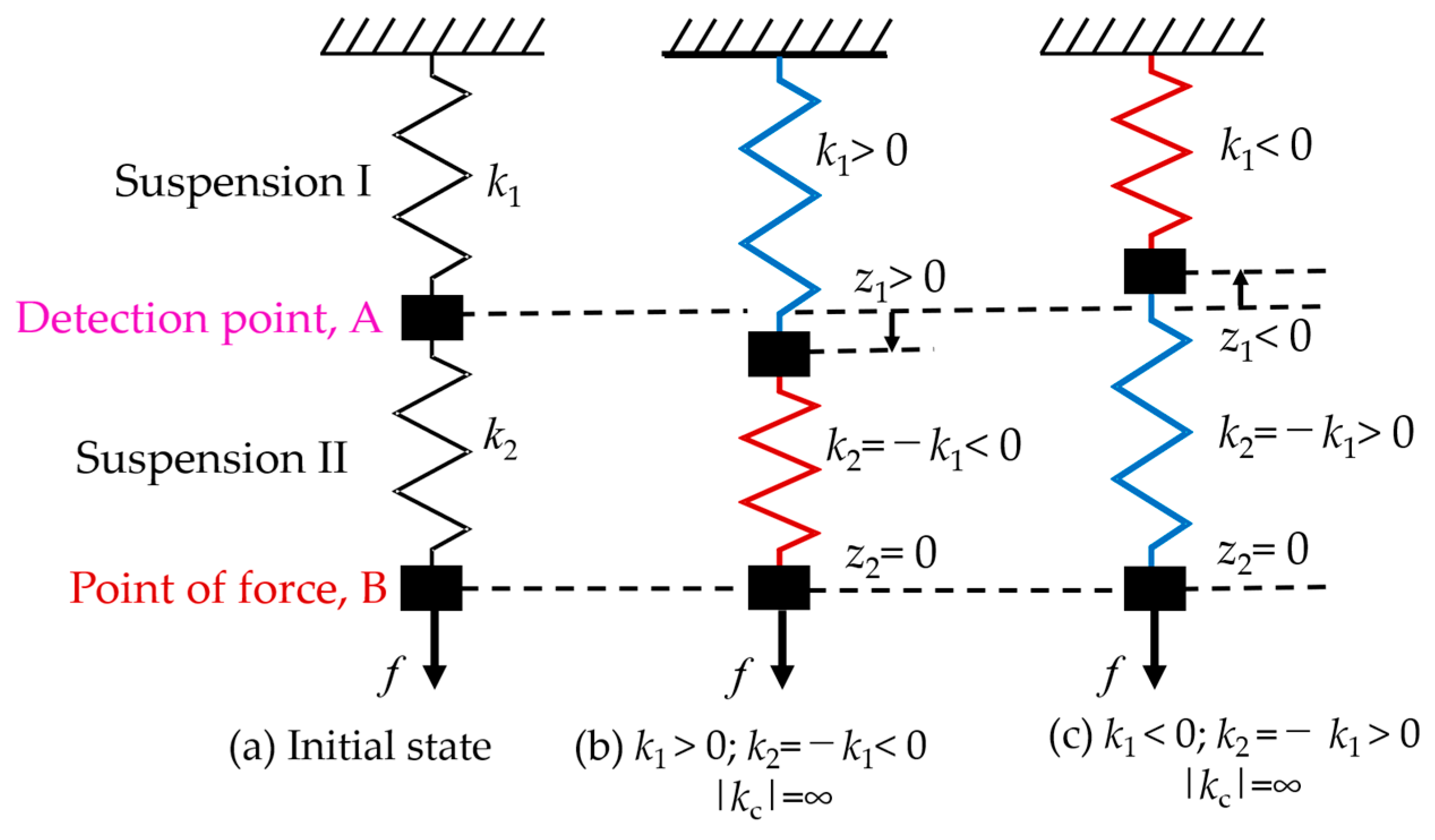
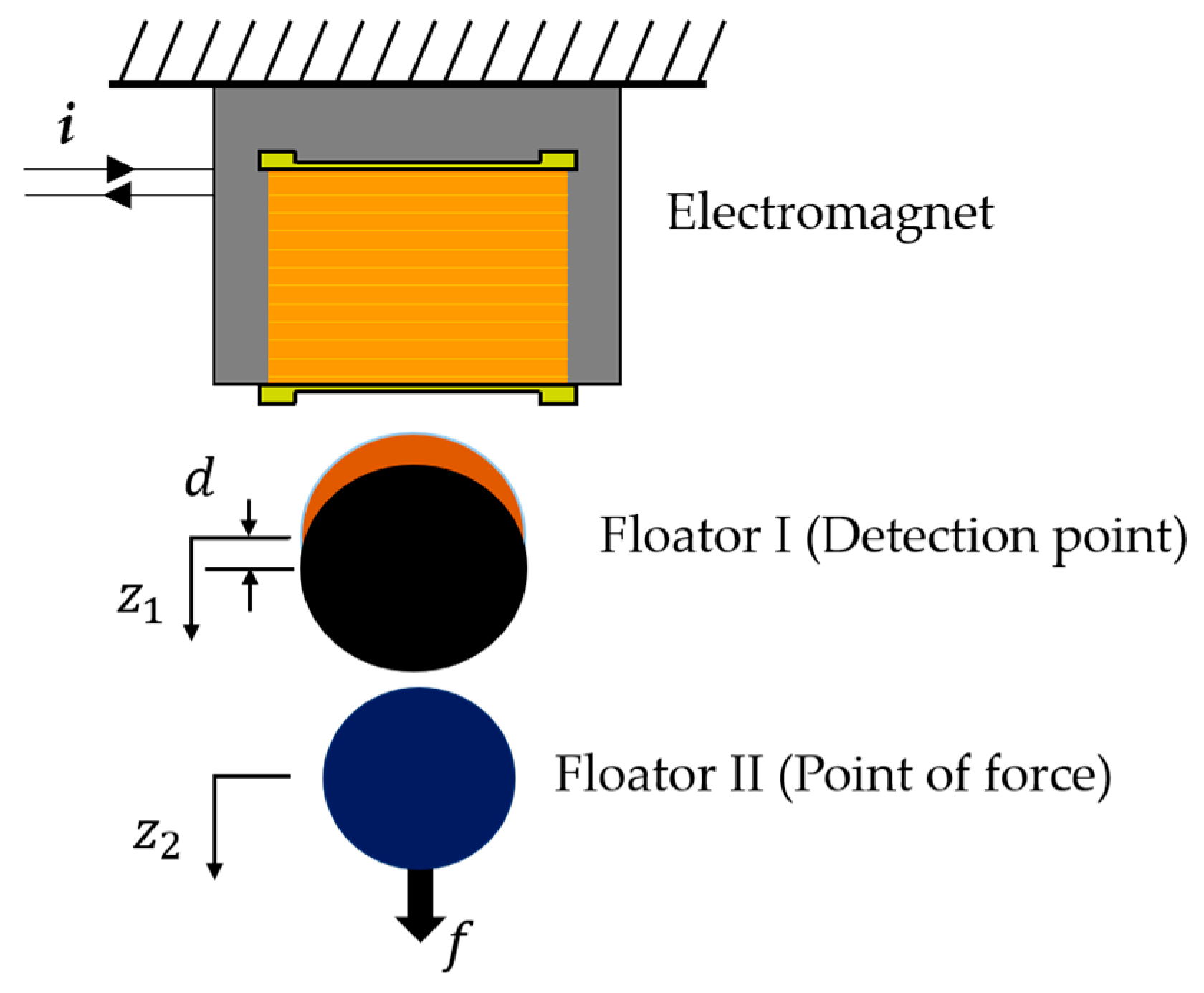
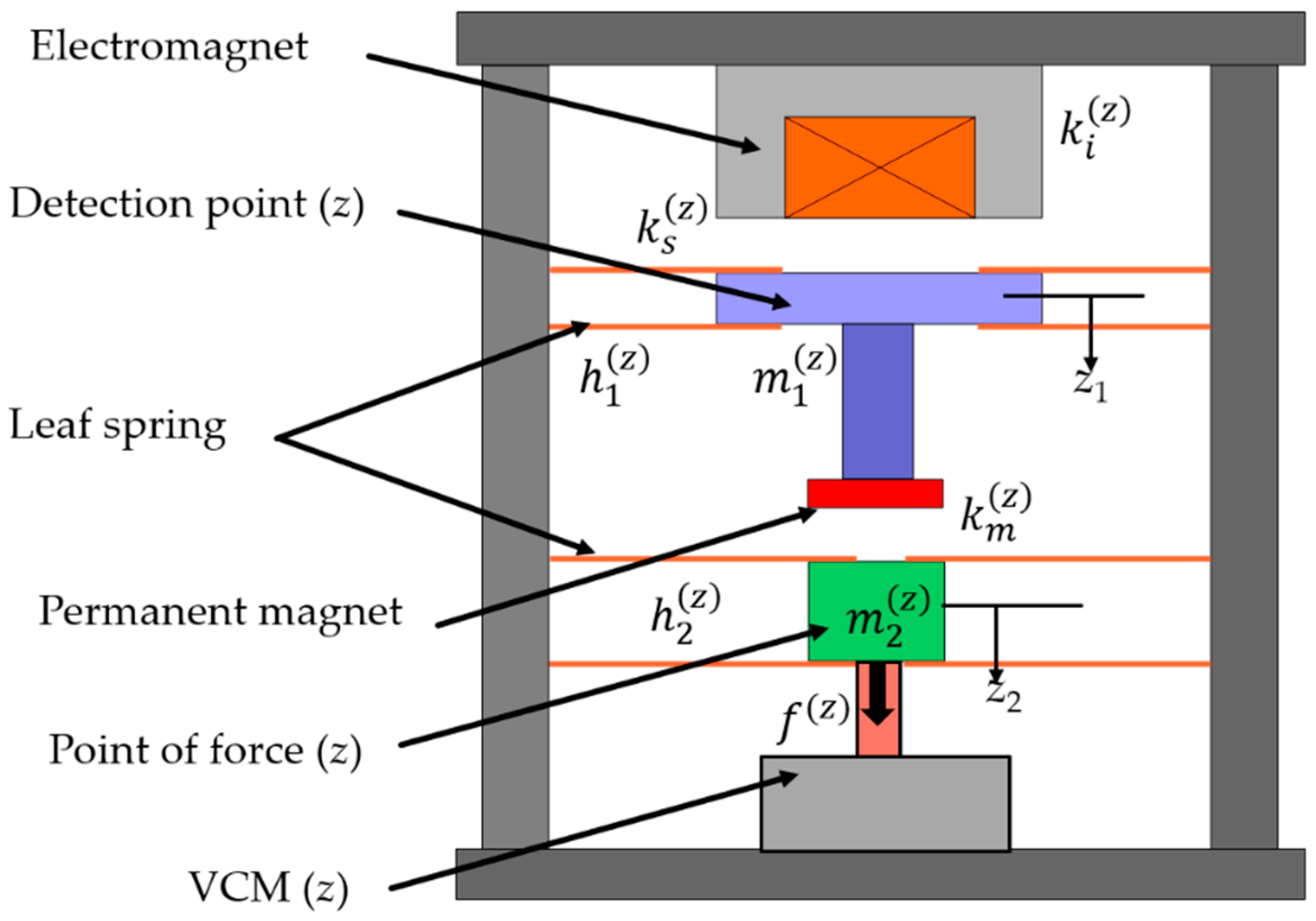

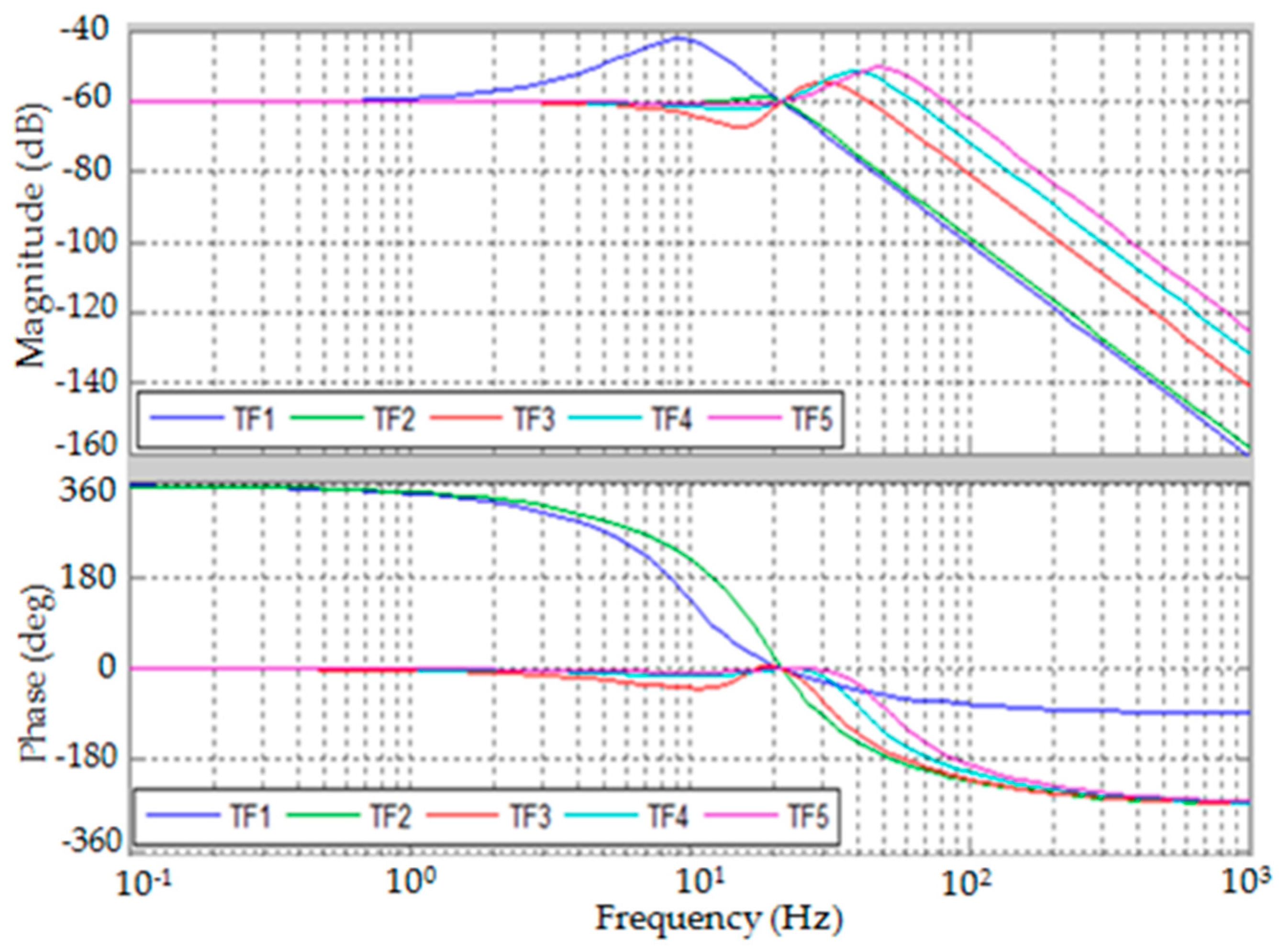
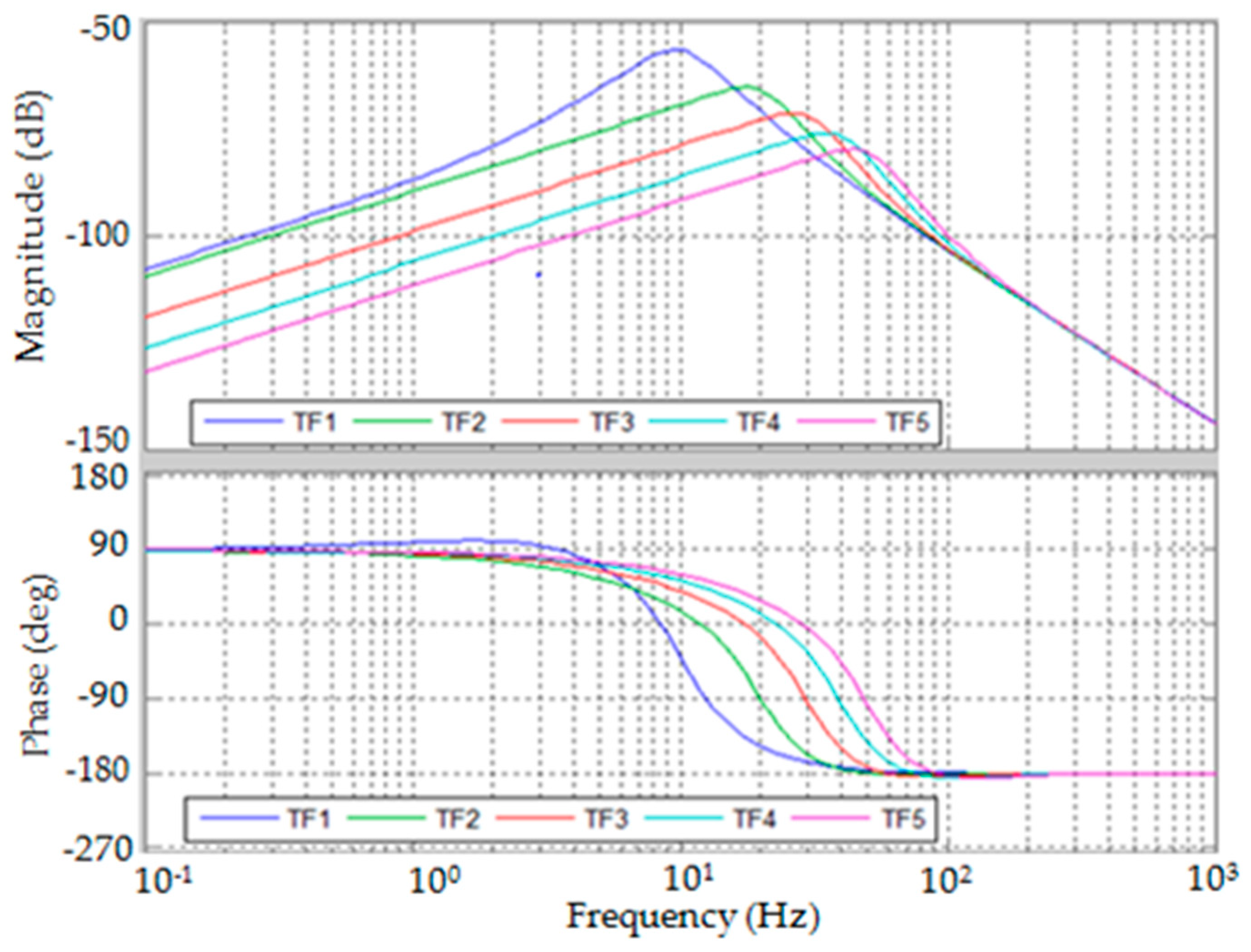
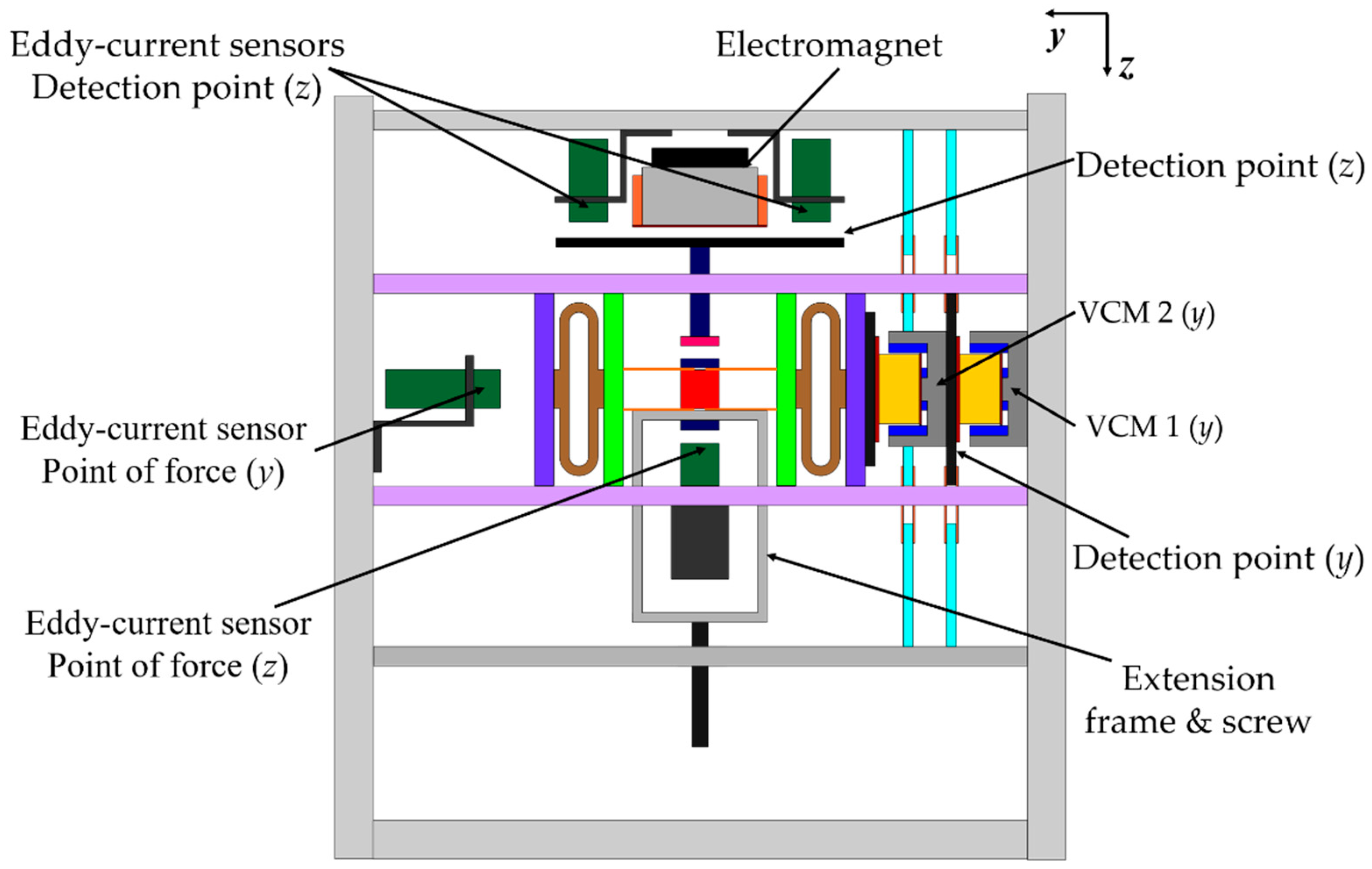
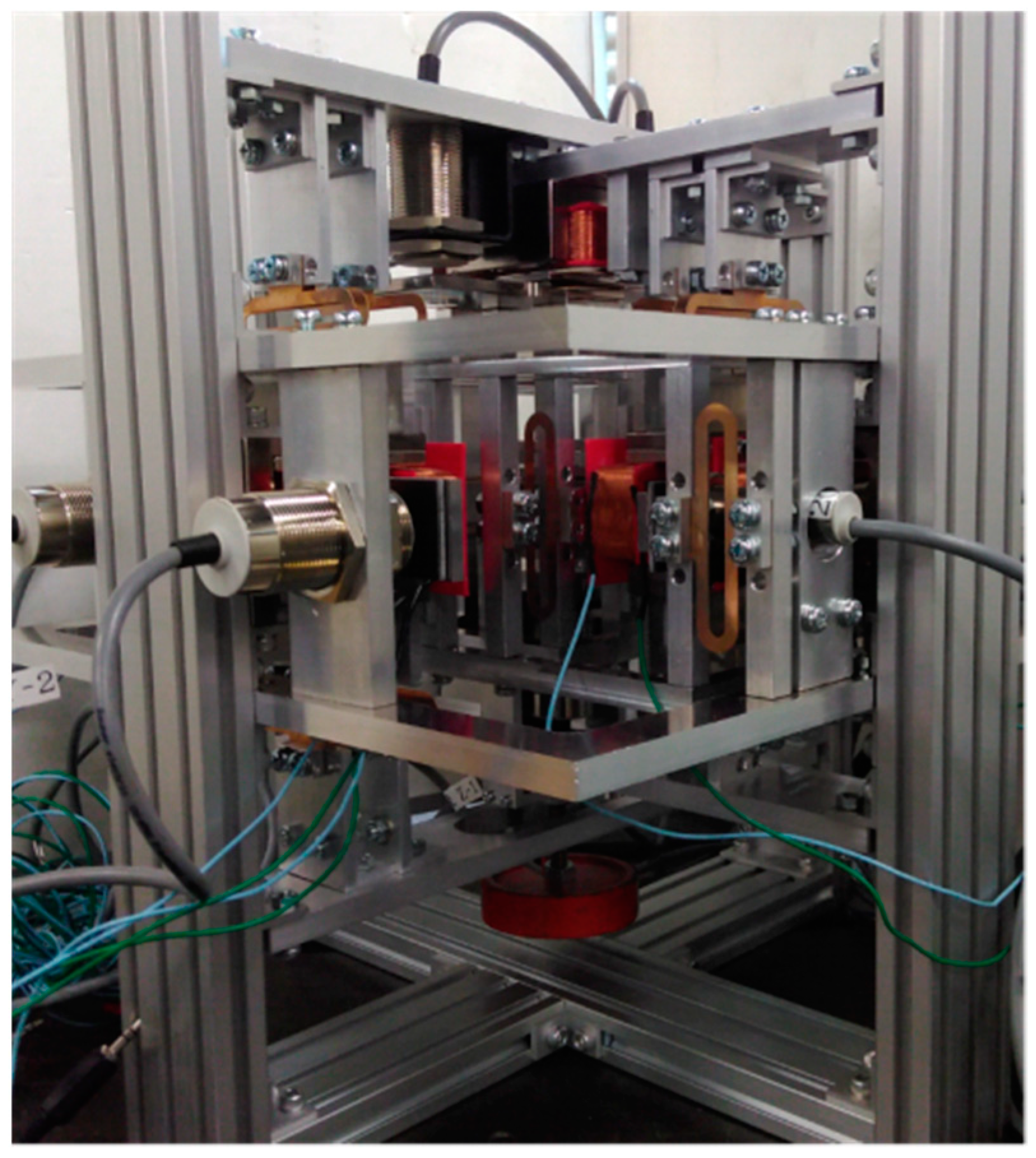
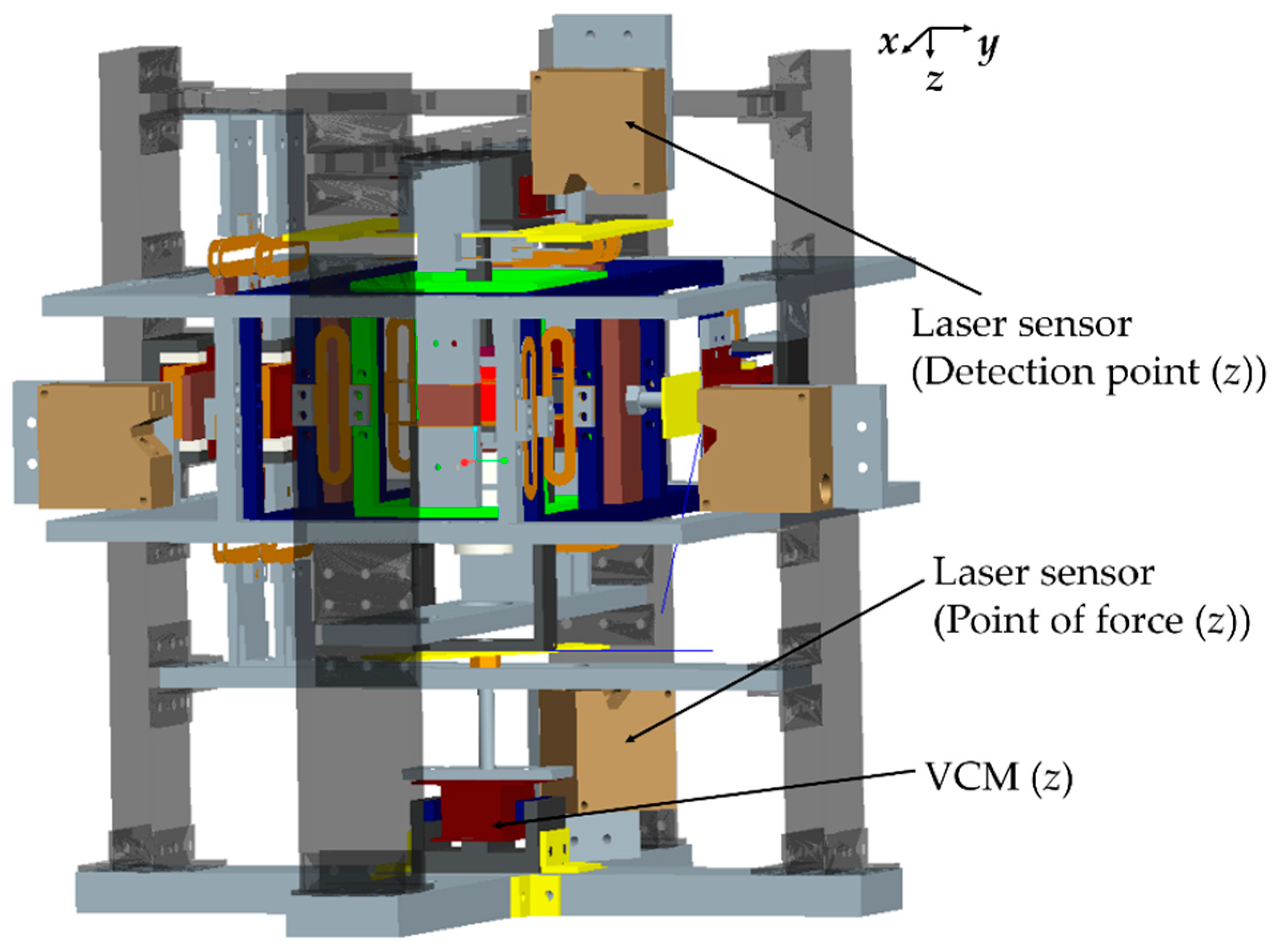
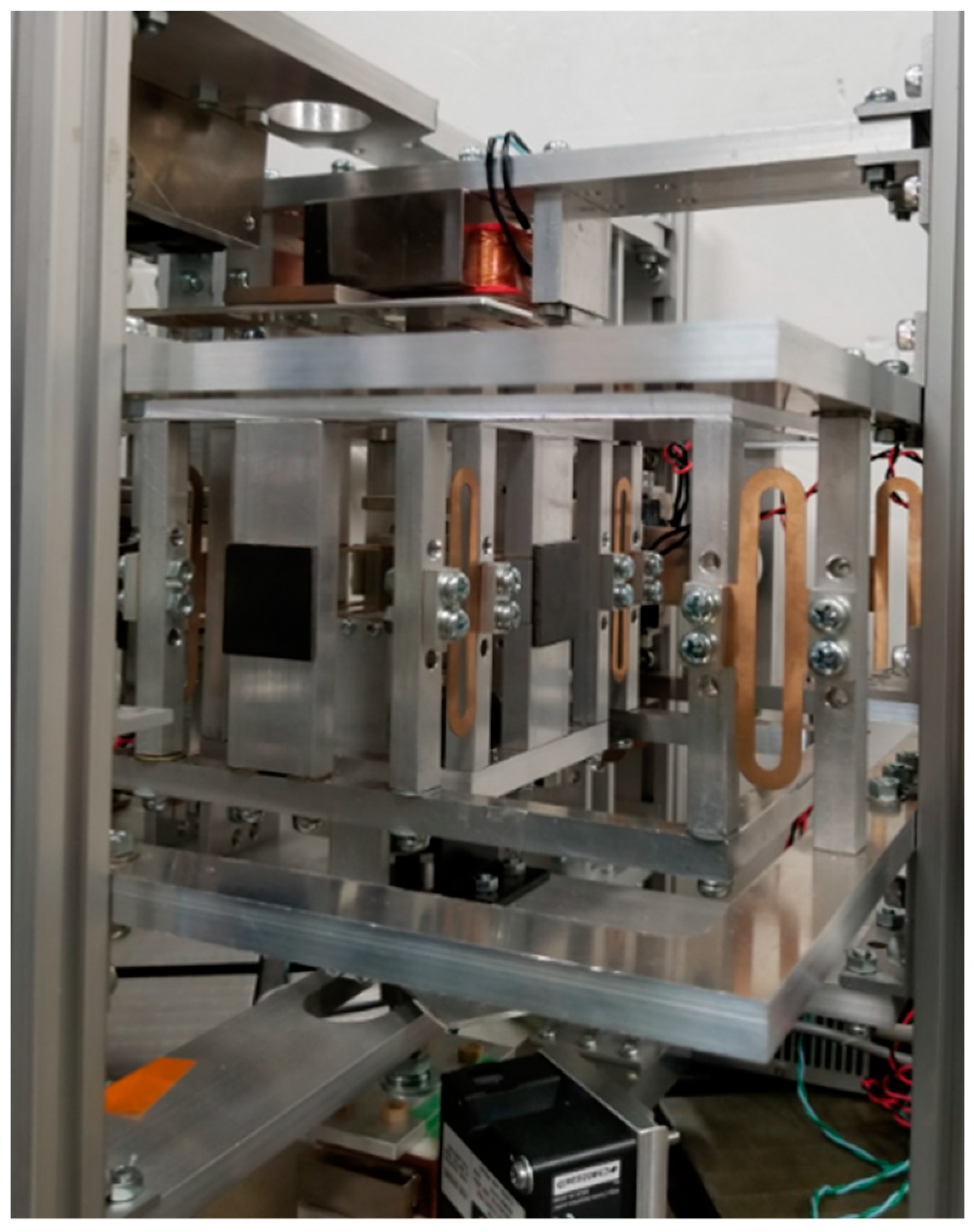
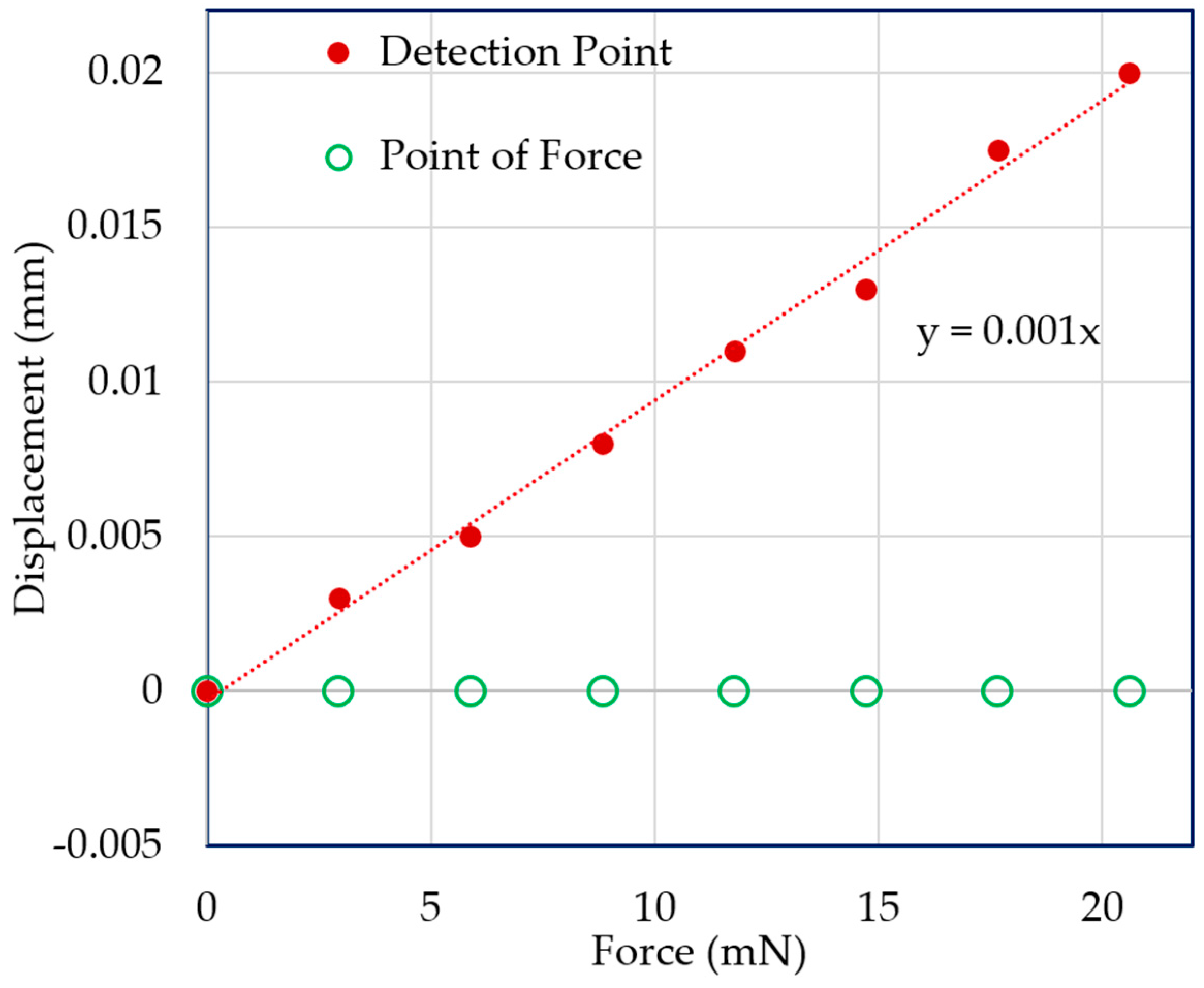

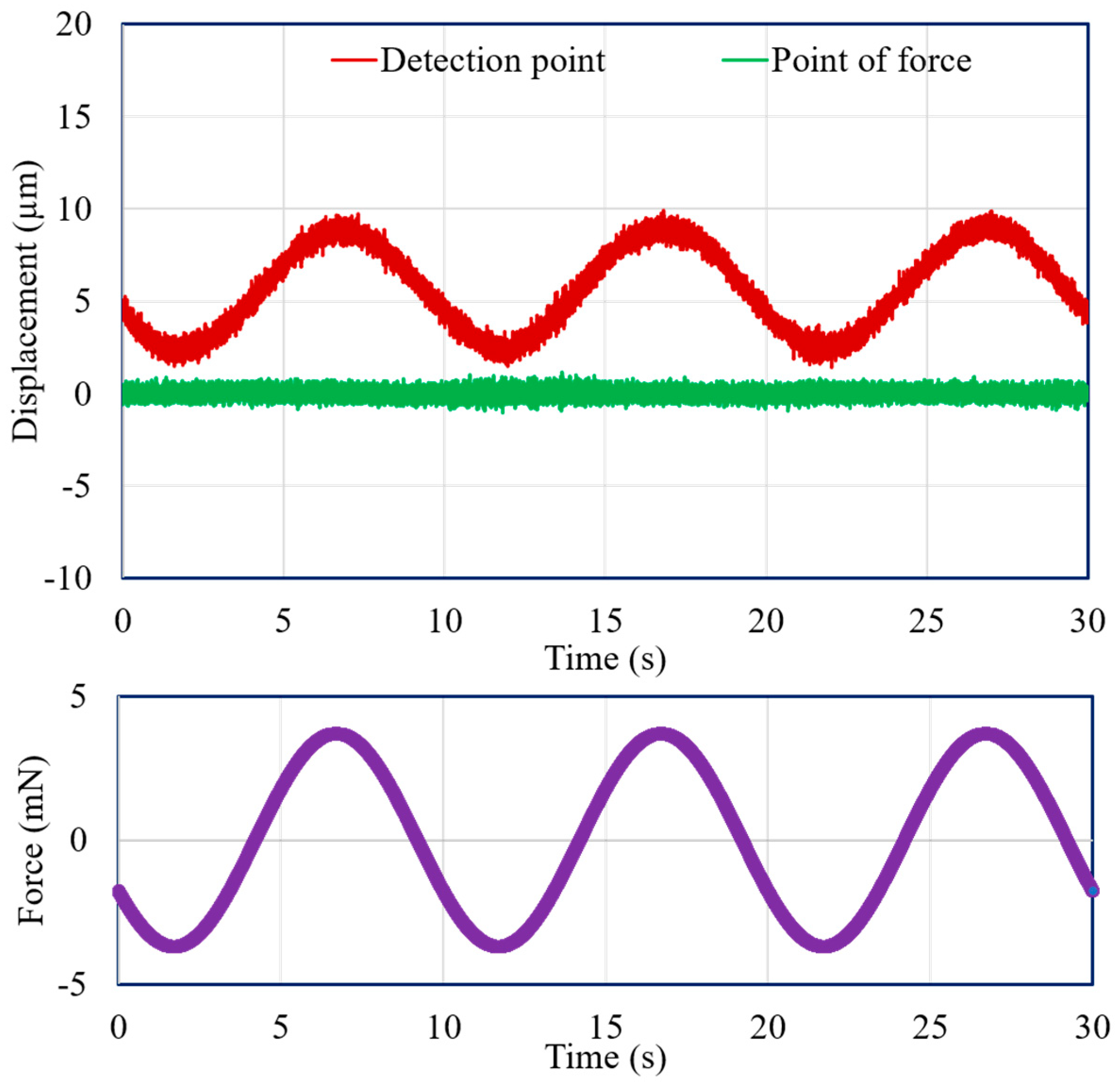
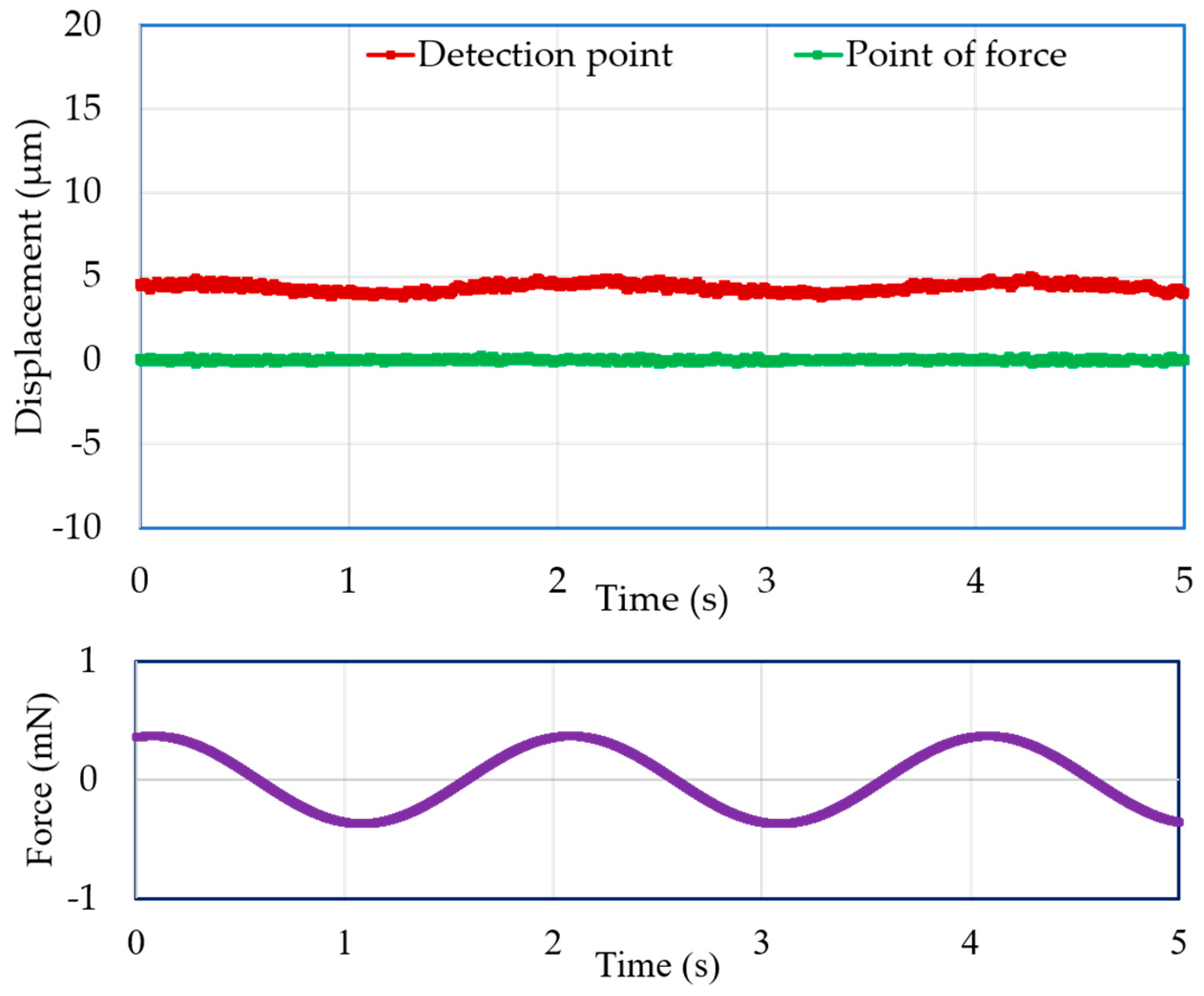
| Serial No. | ||||||
|---|---|---|---|---|---|---|
| TF1 | 10 | −768.767 | 13.25 | 263.803 | −60.9846 | 24901.8 |
| TF2 | 20 | 3270.36 | 26.5 | −9157.61 | 76.3943 | 796857 |
| TF3 | 30 | 10002.2 | 39.75 | 26466.2 | 610.5 | 6.05113 × |
| TF4 | 40 | 19426.9 | 53 | 184125 | 1739.7 | 2.54994 × |
| TF5 | 50 | 31544.3 | 66.25 | 571602 | 3662.35 | 7.7818 × |
© 2019 by the authors. Licensee MDPI, Basel, Switzerland. This article is an open access article distributed under the terms and conditions of the Creative Commons Attribution (CC BY) license (http://creativecommons.org/licenses/by/4.0/).
Share and Cite
Nahiyan, M.H.A.; Mizuno, T.; Takasaki, M.; Ishino, Y.; Hara, M.; Yamaguchi, D. Modeling and Validation of Vertical Direction Force Estimation with a Three-Dimensional Force Measurement Instrument Based on a Zero-Compliance Mechanism. Sensors 2019, 19, 799. https://doi.org/10.3390/s19040799
Nahiyan MHA, Mizuno T, Takasaki M, Ishino Y, Hara M, Yamaguchi D. Modeling and Validation of Vertical Direction Force Estimation with a Three-Dimensional Force Measurement Instrument Based on a Zero-Compliance Mechanism. Sensors. 2019; 19(4):799. https://doi.org/10.3390/s19040799
Chicago/Turabian StyleNahiyan, Md Helal An, Takeshi Mizuno, Masaya Takasaki, Yuji Ishino, Masayuki Hara, and Daisuke Yamaguchi. 2019. "Modeling and Validation of Vertical Direction Force Estimation with a Three-Dimensional Force Measurement Instrument Based on a Zero-Compliance Mechanism" Sensors 19, no. 4: 799. https://doi.org/10.3390/s19040799
APA StyleNahiyan, M. H. A., Mizuno, T., Takasaki, M., Ishino, Y., Hara, M., & Yamaguchi, D. (2019). Modeling and Validation of Vertical Direction Force Estimation with a Three-Dimensional Force Measurement Instrument Based on a Zero-Compliance Mechanism. Sensors, 19(4), 799. https://doi.org/10.3390/s19040799





